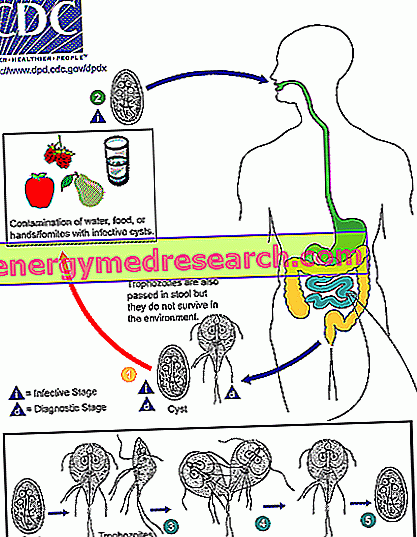Related articles: Miliaria
Definition
The miliaria is an acute inflammation of the skin, characterized by the appearance of an itchy eruption. The cause is attributable to the obstruction of the excretory ducts of the sweat glands, which prevents sweat from reaching the skin surface. This results in the retention of the sweat secretion in the subcutaneous layers (perspiration remains trapped in the epidermis or dermis).
The miliaria is generally present in the hot-humid regions and occurs mainly during the summer, especially in the youngest children. In fact, heat and high humidity can trigger or worsen the disorder, as they favor the production of sweat. However, miliaria may also appear in cold climates, in subjects that are too heavily dressed and sweating too much. Even the use of clothing that is too tight or that does not allow the skin to breathe contributes to the onset of miliaria.
The itchy rashes appear especially in areas where sweat stagnates more: neck, armpits, forehead, upper part of the trunk and proximal extremities of the limbs.
Most common symptoms and signs *
- Edema
- Erythema
- Nodule
- papules
- Paresthesia
- itch
- Pustules
- Sweating
- blisters
Further indications
The most characteristic symptom of the miliaria is the onset of an acute rash, of an inflammatory nature, which manifests itself in the form of vesicles, papules or nodules. Often, irritation (tingling) and severe itching are associated. The stratum corneum of the epidermis becomes edematous.
The obstruction of the sweat ducts can occur at different levels; therefore, depending on the depth of the block, various types of lesions occur.
In the crystalline miliaria (or sudamina ), the obstruction and inflammation are localized in the more superficial layers of the epidermis, with retention of the sweat under the stratum corneum. This form causes hundreds of small clear blisters, which break easily with light pressure.
The miliaria rubra, on the other hand, is caused by the retention of sweat in the deep epidermis and in the dermis; it manifests itself in the form of erythematous and pruritic papules located in the epidermis.
In deep miliaria, ductal obstruction occurs even more deeply, at the entrance of the ducts at the level of the dermo-epidermal junction; causes nodules or large papules, often painful.
The diagnosis of the miliaria is based on the clinical aspect of the rash and on the identification of the triggering causes.
The treatment consists of cooling and drying the affected areas. To facilitate resolution of miliaria, it is important to avoid conditions that promote sweating. In hot and humid climates, for example, it is ideal to stay in an air-conditioned environment with air conditioning and use breathable clothing.
In some cases, topical therapy based on creams or cortisone lotions may be indicated.



